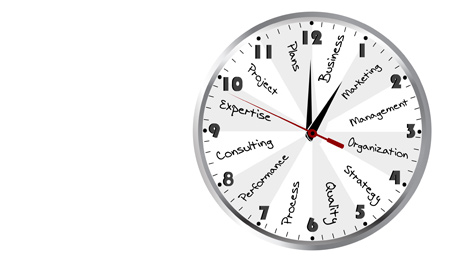Knocking Out Negativity
Naysayer. Pessimist. Negative Person. Chronic complainer. Glass Half Empty Kinda Guy. We’ve got more than a fair share of names for those folks who just can’t see the bright side of things. They are often the first to tell you why your great idea won’t work. When you set goals with them, they give you every reason why the goal can’t be met – doing so even before they’ve had a chance to think about new ways to address hurdles. We all know who they are. In fact, I bet a few names are immediately coming to mind!
I’ve spent a good amount of time listening to my clients complain about the pessimists on their teams. “He just can’t get out of his own way” shared one senior executive. “She takes up so much of my time and energy, always having to convince her of the positive possibilities. I just wish she could explore things first, before she gives me 10 reasons why she can’t do something”, said another executive. As a facilitator, I always want to be given a heads-up on who “they” are so that I can neutralize their impact on a group. The bottom line? Working with pessimists can be hard work, testing the skill of even the most savvy manager and leader. So, how do you manage the naysayer amongst you?
My Direct Report is a Naysayer
It may be tempting to first ask, “what can I do to change them?”, but the place to start is with you. As a leader, your role is to inspire those around you and to build confidence in the vision and plan you have set forth. Have you taken the time to listen and understand your direct report’s concerns and to share your vision in a way that resonates with this person? Have you shared honest and constructive feedback on what your direct report is doing and how it is impacting the business? Do you take the time to set ground rules in group meetings which foster positive thinking and a solution – oriented mindset? Do you look for opportunities to engage your naysayer by having her develop your back-up and risk mitigation plans? If after assessing your own efforts, you are still scratching your head about what to do, try running some coach interference. Give specific examples of your naysayer’s behavior and how it impacts you and the rest of the team. If the person is willing to explore a change, help them to identify concrete ideas for suppressing the urge to criticize. For example, when the urge arises, they can count silently to five, then ask three supportive questions of their co-worker.
If all efforts fail, and the impact on morale and productivity of the team is significant, it might be time to change the players on the bus.
I report to a naysayer
My condolences! You are likely exhausted from working overtime as you find ways to work around your boss. You might even have had to work back-door channels to move your project far enough along to prove to your boss that success is possible. To increase your odds of success while working for a boss who swims in pessimism, try meeting them where they are. Make the effort to anticipate concerns and questions. Then, bring a plan that addresses those concerns. Can you change your boss? It’s unlikely, especially if that same pessimistic behavior keeps your boss from having the kind of open and candid discussions that are required to foster better working relations.
The good news? Bosses with a pessimistic or negative outlook tend not to get as high on the corporate ladder. Why? Well, no one wants to follow them! A sense of realism, practicality and an ability to see and mitigate risks are important skills to bring to the leadership table, but not at the expense of hope and inspiration.
Oh no! I think I’m a naysayer!
Congratulations! You’ve just crossed the first hurdle! You are aware of your tendency and behavior to be less than positive. Now, do you care enough to change things? What’s the cost of your pessimism? Do you miss out on opportunities? Do you notice how your approach dampens the mood and decreases productivity in your organization? Do you recognize the connection between your negativity and potential health concerns? Are you simply tired of feeling unhappy? The costs of being a naysayer can go far beyond simply annoying a colleague by stopping their ideas right in their tracks.
When you decide the costs are too high and you are ready for a change, try spending more time with positive people and living two entire weeks in complete optimism. At first, it won’t be easy telling your spouse, “Yes, I think your way could work. Let’s try it for a few days.” or a co-worker, “Yes, I see the many benefits to your idea. Let’s discuss how it will help the organization.”, but I guarantee that by the end of the two weeks, you’ll have good reason to continue the experiment. You may notice a greater connection to people and lower stress. And that feeling we call “happiness”? Well, it may not be that elusive after all!
– Nina Bowman









